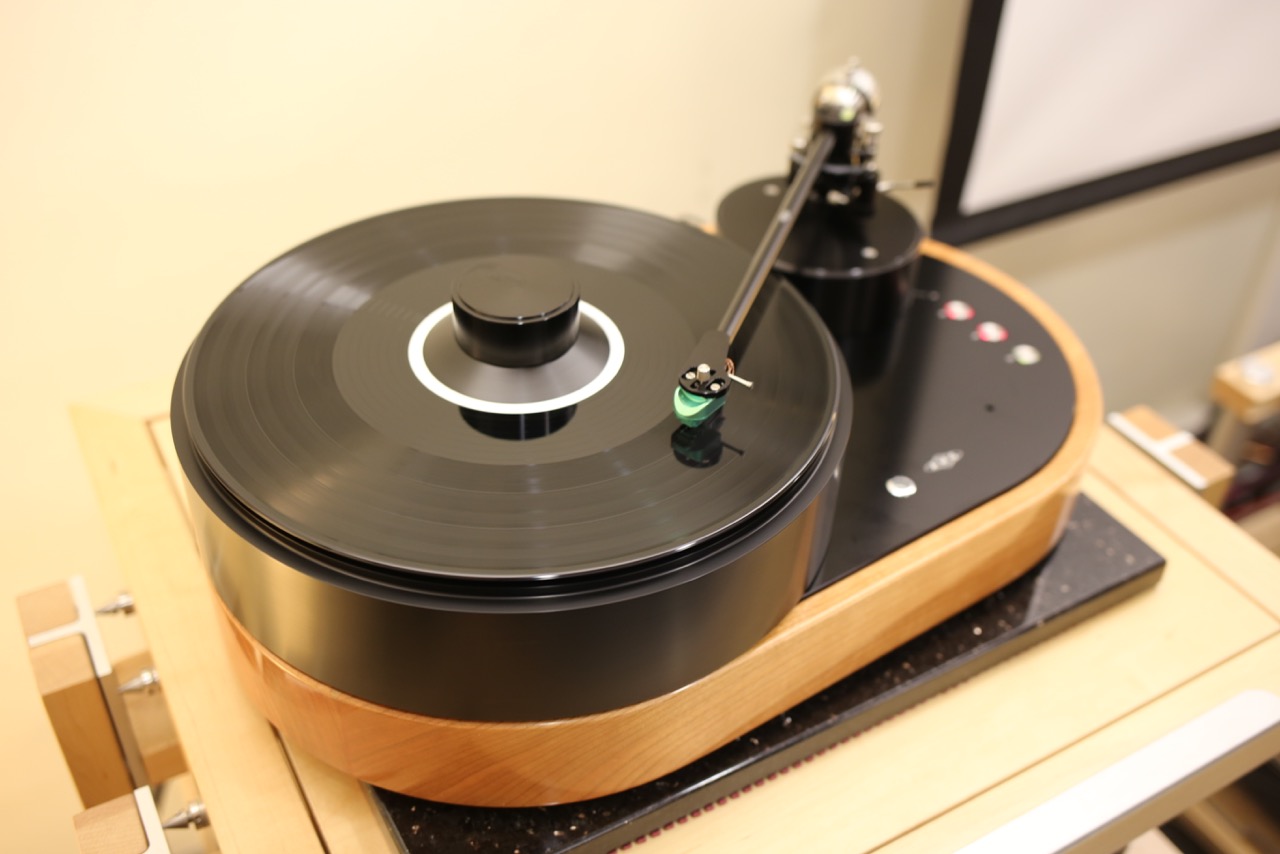I’ve been using the AMG Viela turntable and 12J2 tonearm as my personal reference for better than four years. AMG recently announced a new version of 12J2, called the 12JT (for Turbo). As a standalone arm, the 12J2 sells for $4,500 whereas the new arm comes in at $8,500. I was excited to see and hear what AMG had achieved with the new arm.
Description
Anyone familiar with the original AMG 12J2 tonearm will immediately see the family resemblance of these two tonearms. You will also immediately see that the 12JT is more impressive looking. It features a slightly larger bearing housing, an even more beautifully-machined counterbalance and equally impressive-looking silver locking thumbscrews. It’s still not a tonearm with much bling, but it simply looks of precision and impressive build quality.
In use, the most obvious difference between the two arms is in how you set them up. The original 12J2 tonearm came with a really nice set of precision tools that you used for all the adjustments of the tonearm. The Turbo does away with those tools and instead has nice thumbscrews you use to set everything: VTA, VTF, azimuth, and anti-skating. It also has a bubble level in the top of the bearing housing and a very easy to read micrometer to assist with setting VTA.
Those aren’t the only changes, though. With the 12J2, the horizontal bearing used an axle of hardened tool steel configured as a needle on one end and as a roller bearing on the other end. The Turbo has a larger horizontal axle featuring dual micro-ball bearing assemblies. According to AMG, these changes yield enhanced stability and reduced friction, and my listening bears this out. The vertical bearing uses AMG’s patented bearing that is similar to that used in the rotor heads of helicopters. It uses two “spring steel wires” (the Turbo uses a newer wire) that allow fine tuning of azimuth while also eliminating any play in the bearing.
The Turbo’s tonearm wand is made of an aircraft quality, anodized aluminum tube for resonance control and has an effective mass of 13.9 grams, slightly higher than the 12J2. The counterweight is a two-piece design with a Teflon decoupled sleeve with a thumbscrew to tighten it. The 12J2 is wired with three strands of 50 micron high-quality copper per leg whereas the Turbo uses multiple gauges of high-quality copper. Anti-skating is of the magnetic design with a decoupled ring magnet and two bar magnets.
Click to read entire review on Dagogo.com.

